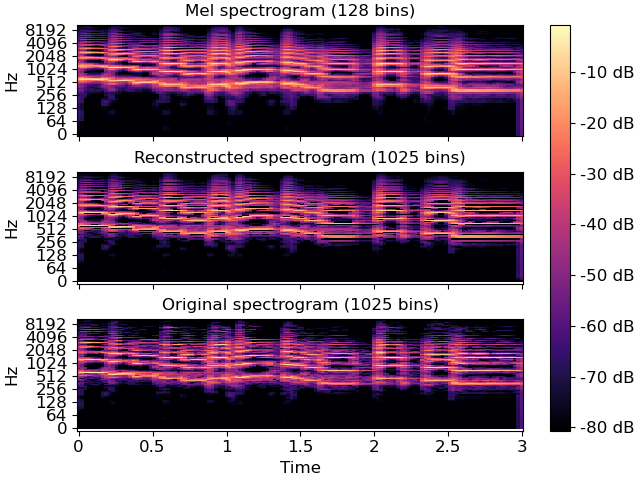librosa.util.nnls¶
- librosa.util.nnls(A, B, **kwargs)[source]¶
Non-negative least squares.
Given two matrices A and B, find a non-negative matrix X that minimizes the sum squared error:
err(X) = sum_i,j ((AX)[i,j] - B[i, j])^2
- Parameters
- Anp.ndarray [shape=(m, n)]
The basis matrix
- Bnp.ndarray [shape=(…, m, N)]
The target array. Additional leading dimensions are supported.
- **kwargs
Additional keyword arguments to
scipy.optimize.fmin_l_bfgs_b
- Returns
- Xnp.ndarray [shape=(…, n, N), non-negative]
A minimizing solution to
|AX - B|^2
Examples
Approximate a magnitude spectrum from its mel spectrogram
>>> y, sr = librosa.load(librosa.ex('trumpet'), duration=3) >>> S = np.abs(librosa.stft(y, n_fft=2048)) >>> M = librosa.feature.melspectrogram(S=S, sr=sr, power=1) >>> mel_basis = librosa.filters.mel(sr=sr, n_fft=2048, n_mels=M.shape[0]) >>> S_recover = librosa.util.nnls(mel_basis, M)
Plot the results
>>> import matplotlib.pyplot as plt >>> fig, ax = plt.subplots(nrows=3, sharex=True, sharey=True) >>> librosa.display.specshow(librosa.amplitude_to_db(S, ref=np.max), ... y_axis='log', x_axis='time', ax=ax[2]) >>> ax[2].set(title='Original spectrogram (1025 bins)') >>> ax[2].label_outer() >>> librosa.display.specshow(librosa.amplitude_to_db(M, ref=np.max), ... y_axis='mel', x_axis='time', ax=ax[0]) >>> ax[0].set(title='Mel spectrogram (128 bins)') >>> ax[0].label_outer() >>> img = librosa.display.specshow(librosa.amplitude_to_db(S_recover, ref=np.max(S)), ... y_axis='log', x_axis='time', ax=ax[1]) >>> ax[1].set(title='Reconstructed spectrogram (1025 bins)') >>> ax[1].label_outer() >>> fig.colorbar(img, ax=ax, format="%+2.0f dB")
